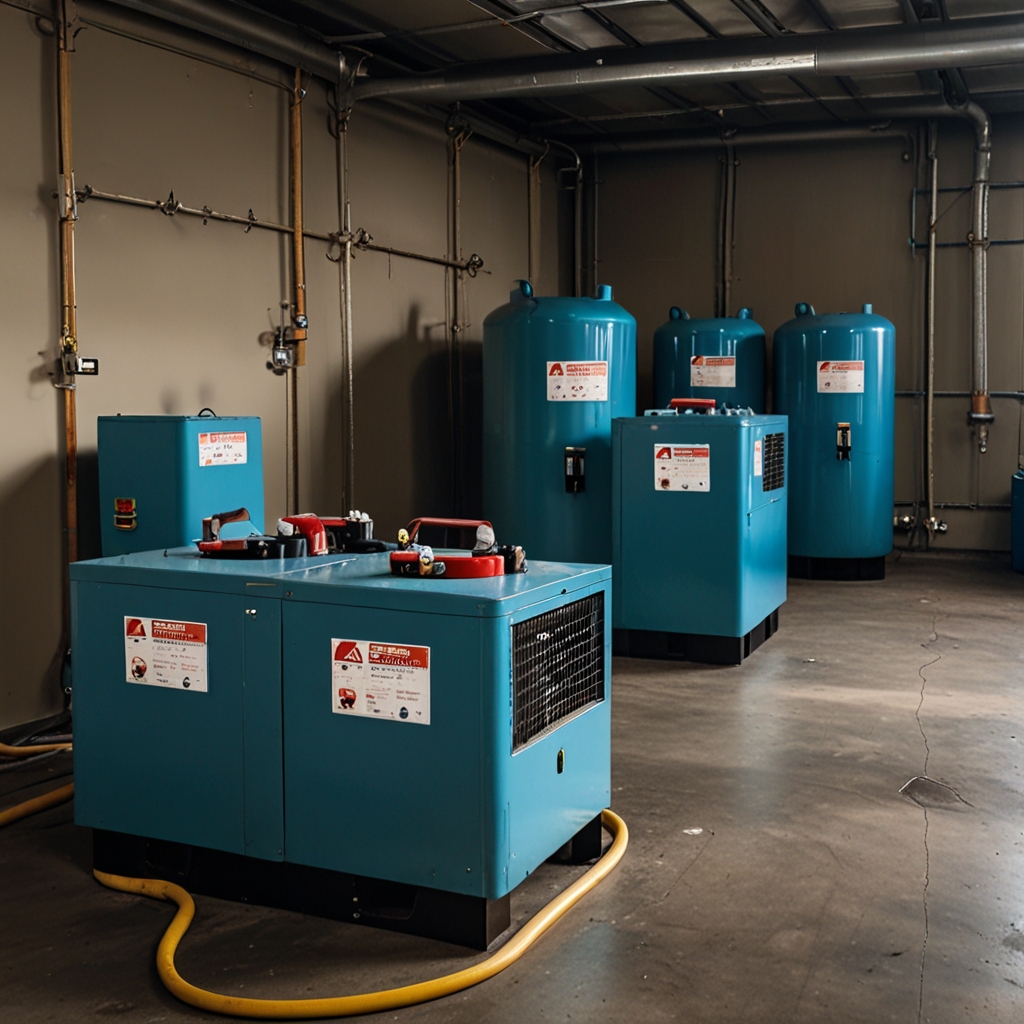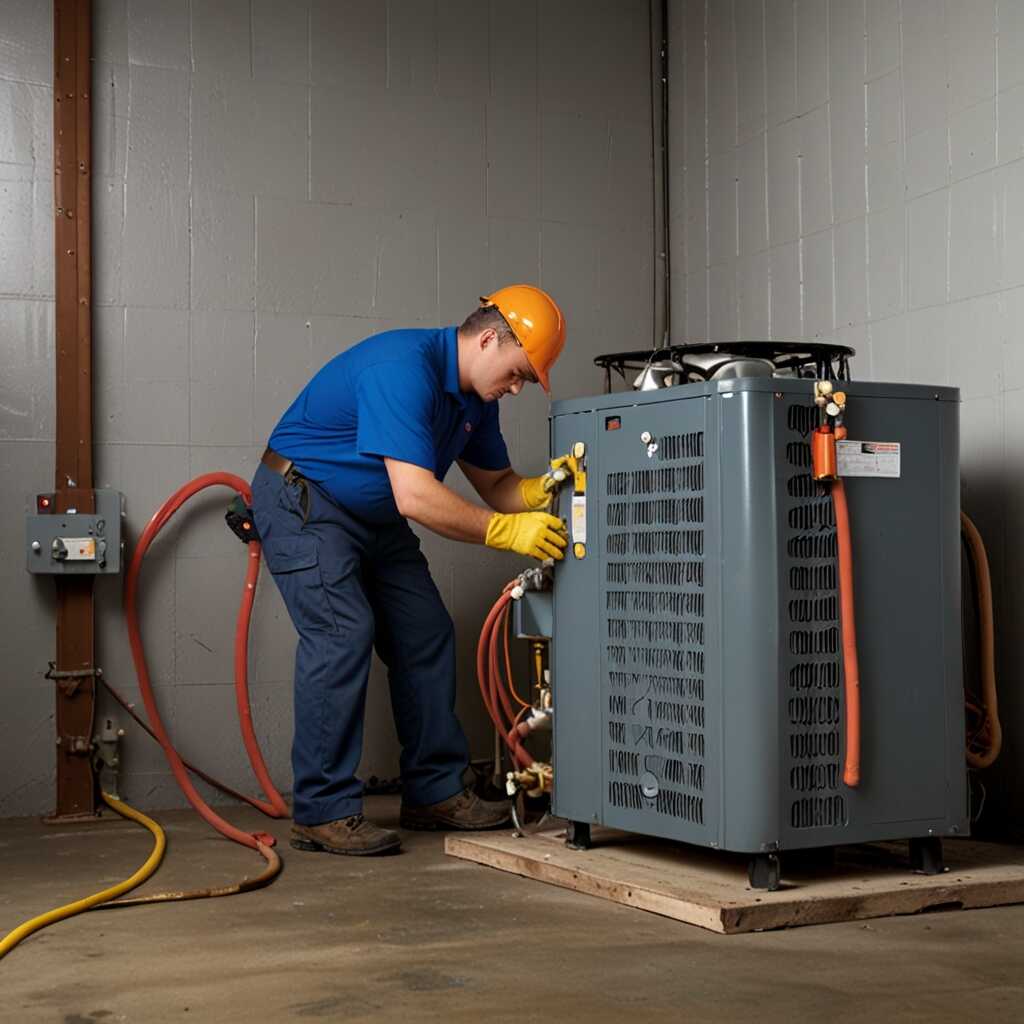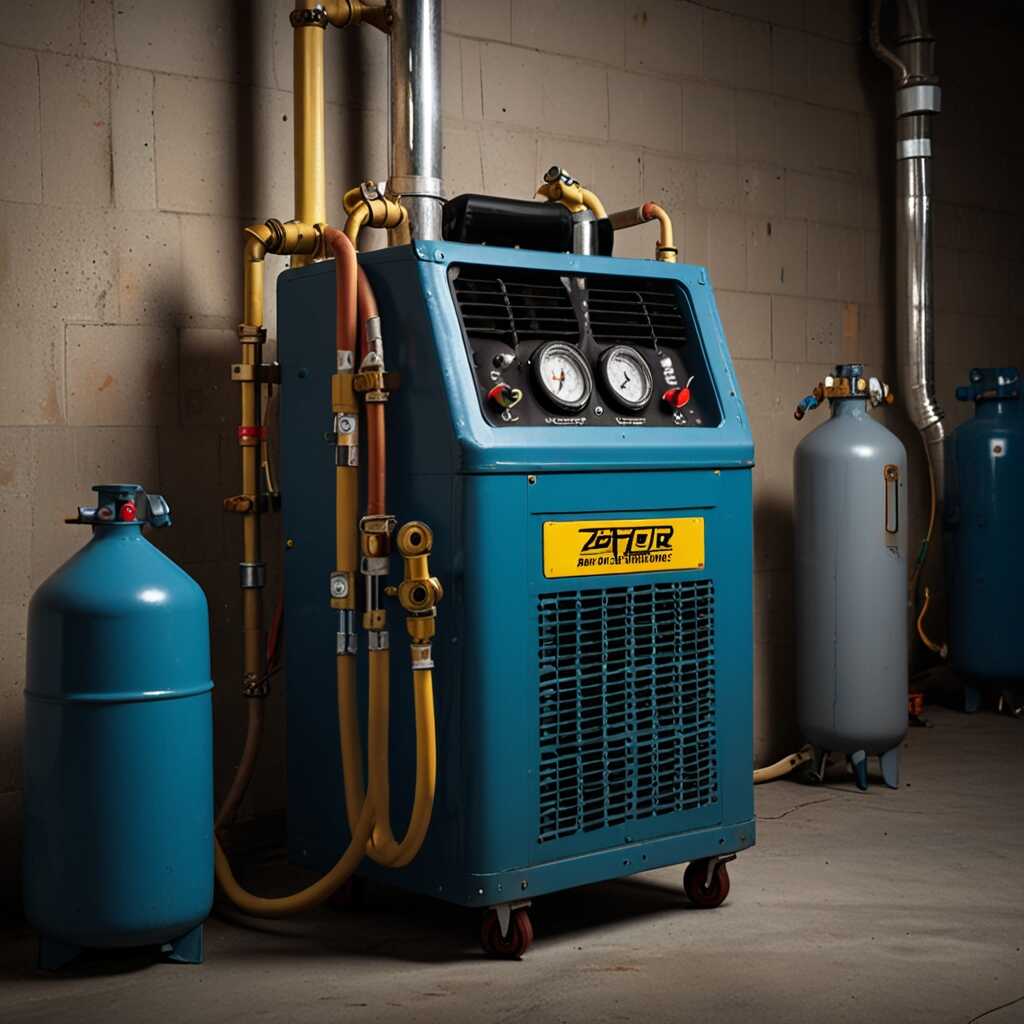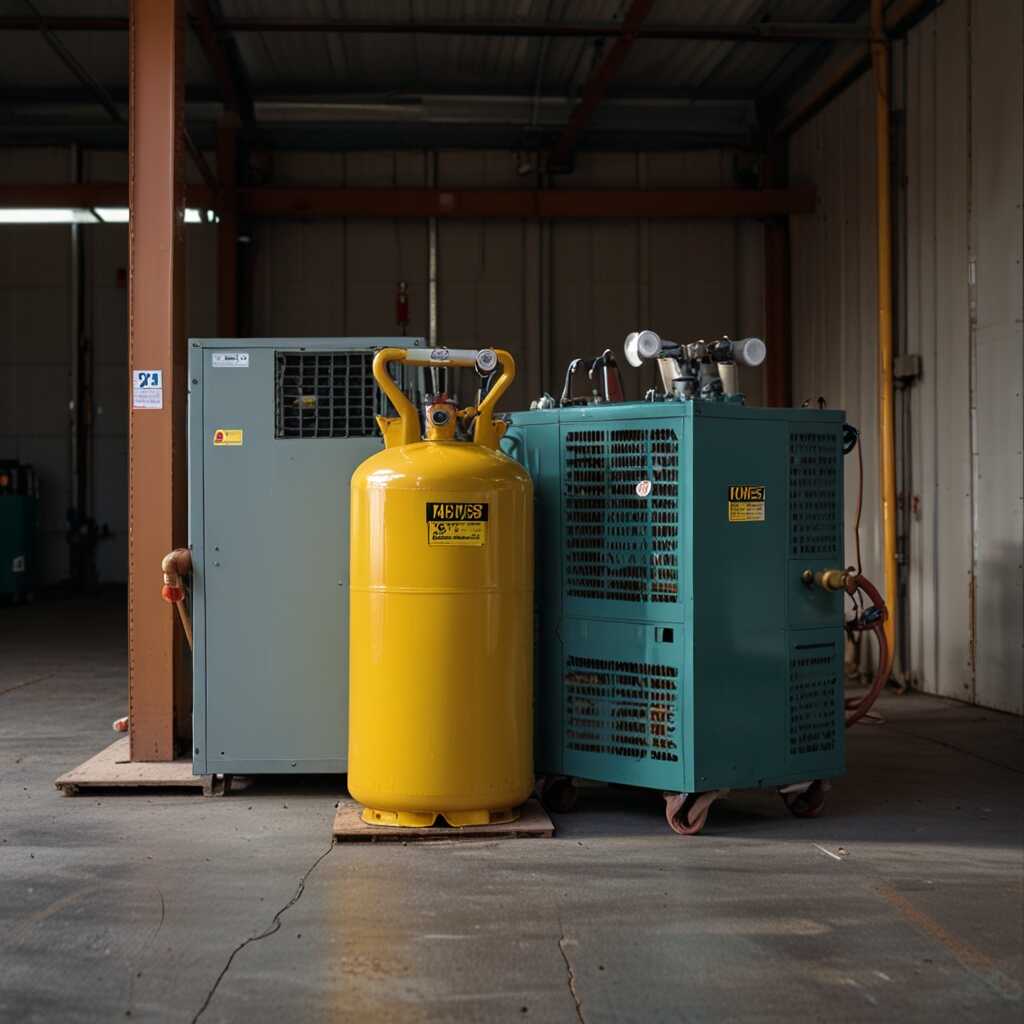Ensuring quality with refrigerant recovery machines and purity analyzers is crucial for proper refrigerant management. These machines help maintain the integrity of recovered refrigerants, minimizing environmental impact and promoting compliance with industry standards. Refrigerant Recovery Pro offers expert insights and technical support for HVAC technicians, highlighting best practices for utilizing these vital tools. Understanding the role of purity analyzers can enhance recovery processes, ensuring efficiency and environmental safety.
Significance of Effective Refrigerant Recovery Techniques
Effective refrigerant recovery techniques provide multiple advantages for HVAC systems. They enhance system performance and reliability by preventing contamination from residual refrigerants. Contamination can lead to decreased efficiency and increased wear on components. By using methods that ensure environmental responsibility, HVAC professionals help protect the ecosystem. Proper testing and adherence to best practices also ensure compliance with regulatory standards. Research shows that HVAC systems can operate at optimal levels when contamination is minimized. On average, improper recovery methods can lose up to 30% of refrigerants, impacting efficiency and leading to environmental harm. Users should prioritize efficient refrigerant recovery and testing for best results.
How Effective Techniques Prevent Contamination
Effective refrigerant recovery techniques focus on rigorous contamination prevention. These methods include the use of reliable recovery machines equipped with purity analyzers. These analyzers test the refrigerant, ensuring its quality before reuse. The best systems are designed to handle contamination effectively, delivering results that enhance overall HVAC performance. Advanced recovery machines often include filters and purification features. These features significantly improve the recovery process by removing particles and oil that can harm systems. Experts recommend regular reviews of recovery techniques and equipment to ensure they meet industry standards. This ensures both operational efficiency and environmental compliance.
Defining System Purity in Refrigerant Recovery Applications
System purity in refrigerant recovery applications refers to the quality and cleanliness of the refrigerant after the recovery process. Maintaining system purity is essential for operational efficiency and compliance with industry standards. Key components that affect system purity include the presence of contaminants, moisture levels, and the integrity of recovery machines. The goal is to recover refrigerants with a purity level of at least 95%, ensuring they meet the necessary quality compliance standards.
Essential Methods for Purity Analysis in Recovery Processes
To ensure reliable system purity in refrigerant recovery, several effective methods exist for purity analysis. One method involves using advanced testing devices that measure moisture and contaminants within the refrigerant. These devices can handle various refrigerant types and provide accurate readings. Additionally, regular reviews of recovery machines enhance performance and reliability, helping technicians make informed decisions about equipment maintenance. Ensuring these methods are employed can significantly enhance compliance and operational efficiency in refrigerant management.

Operational Mechanics of Refrigerant Recovery Machines
Refrigerant recovery machines consist of several key components that enhance their reliability and efficiency. These include compressors, condensers, pressure gauges, and valves. Each element plays a significant role in ensuring that the refrigerant is safely and effectively recovered. The machines are designed to minimize contamination and maintain refrigerant purity, which is essential for compliance with industry standards. Modern refrigerant recovery machines can achieve an average recovery efficiency of approximately 90%, demonstrating their capability to perform consistently well in varied applications.
Key Components and Their Functions
The key components of a refrigerant recovery machine greatly impact its overall performance and reliability. Compressors play a vital role by drawing in the refrigerant gas and pressurizing it for recovery. Condensers are responsible for cooling the gas, converting it back into a liquid state, thus facilitating storage. Pressure gauges provide real-time data, allowing technicians to monitor recovery status efficiently. Valves help regulate the flow of refrigerants, enhancing the machine’s operational integrity. Understanding these essential features can greatly improve a technician’s ability to use the machine effectively and ensure high-quality recovery results.
Key Numerical Insights on Efficient Refrigerant Management
- 70% of refrigerant loss occurs during recovery processes.
- Over 6 million pounds of refrigerants are improperly released into the atmosphere annually.
- Compliance with regulations can improve recovery success rates up to 90%.
- Systems equipped with purity analyzers detect contaminants 95% of the time.
- Technicians report a 40% time-saving when using advanced recovery machines.
- Refrigerant recovery can reduce costs by as much as 30% in some operations.
- Proper recovery methods can cut greenhouse gas emissions by 50% or more.

Advantages Offered by System Purity Analyzers in HVAC
System purity analyzers enhance the reliability of refrigerant recovery machines. These analyzers provide essential data that helps technicians achieve a higher level of accuracy in refrigerant management. They enable users to identify contamination risks and verify the purity of recovered refrigerants. This is crucial for ensuring compliance with regulatory standards. For instance, many analyzers can detect multiple contaminants like moisture, acids, and oils, ensuring optimal performance. In fact, industry standards for refrigerant purity become easier to meet using these tools.
Key Features of System Purity Analyzers
System purity analyzers come equipped with various features that make them invaluable in HVAC applications. Most models provide real-time testing results through advanced sensors. These sensors detect specific contaminants, such as moisture and hydrocarbons. This ability helps HVAC technicians easily assess refrigerant quality. High-quality analyzers are designed for durability and efficient performance, allowing fast testing in challenging environments. This durability ensures that they can handle demanding tasks without frequent failures. Overall, using system purity analyzers significantly improves the refrigerant recovery process and enhances overall system efficiency.

Understanding the Consequences of Refrigerant Contamination
Refrigerant contamination has multiple negative impacts on HVAC systems. It can cause system failures due to reduced efficiency. This leads to higher repair costs as technicians must replace damaged components. Common contaminants include moisture, acids, and particulates. Each can deteriorate the refrigerant quality significantly. In severe cases, repair costs can increase by up to 50% or more due to extensive damage and necessary replacements.
Types of Contaminants Affecting Refrigerant Quality
Moisture is the most common contaminant, leading to corrosion and ice formation within the system. Acids can form, resulting from chemical reactions within the refrigerant when exposed to moisture. These acids damage critical components like compressors and evaporators. Particulates, such as metal shavings and dirt, can clog filters and restrict flow, reducing the system’s reliability. Addressing these contaminants swiftly is essential for maintaining efficiency and longevity of HVAC systems.
Advantages of Using Advanced Recovery Equipment
- Improved safety by minimizing refrigerant leaks during recovery.
- Increased effectiveness in refrigerant recovery processes.
- Enhanced compliance with environmental regulations is achieved.
- Real-time monitoring through system purity analyzers ensures high refrigerant quality.
- Long-term cost savings from reducing refrigerant purchases and fines.
- Faster recovery times lead to increased job efficiency.
- Greater confidence in meeting industry standards and certifications.

Overview of Regulatory Frameworks Governing Refrigerant Recovery
Understanding the key regulatory bodies involved in refrigerant recovery compliance is essential for HVAC professionals. The Environmental Protection Agency (EPA) establishes federal regulations that govern refrigerant recovery practices. Each state may also have its own rules that align with or exceed federal standards. Failure to comply with these regulatory compliance standards can lead to significant penalties. The maximum fine for violations can reach up to $37,500 per day. Staying updated on refrigerant recovery policies helps ensure environmental protection and compliance with the law.
Understanding State-Specific Regulations
Each state has unique refrigerant recovery policies that HVAC professionals must follow. Professionals should research their state’s HVAC industry guidelines to understand what is required. Some states enforce stricter emissions controls than federal regulations. Frequent compliance reviews help technicians ensure they meet these state-specific requirements. This research enhances reliability in operations and improves environmental stewardship. Staying informed enables technicians to handle refrigerants correctly and avoid legal repercussions.
Guidelines for Selecting Reliable Recovery Machines and Analyzers
HVAC professionals should look for several key features when selecting refrigerant recovery machines. Reliability is vital; choose machines with proven performance and solid reviews. Consider machines designed to enhance efficiency in both recovery and purification processes. Look for features such as built-in purity analyzers, which help ensure compliance with regulatory standards. Models that can handle multiple refrigerants increase versatility and improve operational efficiency. Research various brands, as some consistently provide durable machines with a track record of excellent performance.
Understanding Essential Equipment Capabilities
HVAC professionals must understand the essential capabilities of recovery machines and purity analyzers. Machines with advanced testing features can deliver quicker and more accurate results regarding refrigerant quality. It is important to choose analyzers that can effectively identify contaminants within refrigerants. Models that offer real-time data help technicians make immediate decisions to enhance recovery efforts. Always review equipment specs and industry standards to ensure selected devices meet specific project demands. Reliable performance, clearly outlined features, and positive customer reviews provide comfort in equipment selection.
Popular Brands in Refrigerant Recovery Technology
- Brand A: Known for its durability and user-friendly interface; however, it may lack innovative features.
- Brand B: Offers a compact design and portability, but users report slower recovery rates.
- Brand C: Features advanced purity analyzers with high accuracy; their pricing is on the higher side.
- Brand D: Praised for excellent customer support but struggles with reliability in the field.
- Commercial technicians prefer robust machines due to their project demands and heavy usage.
- Environmental compliance officers advocate for systems with superior monitoring capabilities.
- Construction project managers look for versatile and lightweight recovery equipment to enhance job site mobility.
Essential Training and Best Practices for HVAC Professionals
Training is crucial for HVAC technicians working with refrigerant recovery machines and purity analyzers. Well-trained technicians ensure the reliability and efficiency of recovery processes. Proper understanding of how these machines function leads to safer operations. Technicians can enhance compliance with industry regulations when they are educated about the best practices. Training equips them to handle different refrigerants appropriately. This minimizes environmental impact and maximizes performance. Compliance checks and equipment reviews form integral parts of their training, ensuring a thorough understanding of operational standards.
Best Practices for Using Refrigerant Recovery Machines
Implementing best practices for using refrigerant recovery machines greatly enhances efficiency and ensures compliance. Technicians should conduct regular maintenance and performance testing of equipment. Regular reviews of recovery rates help identify and address issues promptly. Understanding the specific features of each machine is crucial for optimal performance. Training sessions should include hands-on experiences with purity analyzers to test refrigerant quality effectively. Technicians aiming for annual training of at least 16 hours will stay knowledgeable and compliant with evolving regulations. Consistent practice of these guidelines can significantly improve recovery outcomes and reduce risks associated with refrigerant management.